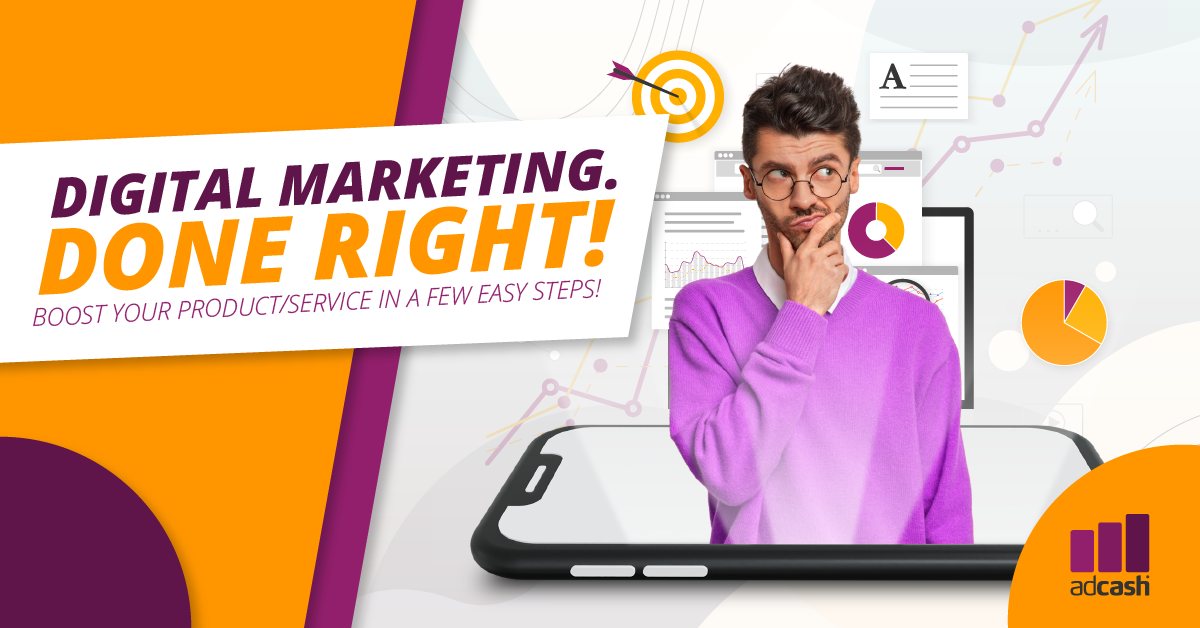Late nights, gray hair, and enough black coffee to give an elephant a heart attack. With all the trial, error, and no small amount of frustration, you’ve officially launched your minimum viable product (MVP). Congratulations! Now it’s time to hit the digital marketing circuit. Start your engines!
Yay. With product done and out the door, how the heck do you now let the world know you’re open for business? Sure, it’s far from perfect and may have some bugs (especially if it falls in the digital spectrum), BUT, you’ve got something to show for the month’s (and years?) of hard work and effort. So let’s get started.
At the end of the day, a product’s an illusion if no one’s there to buy it, adopt it, champion it and recommend it.
Hoards of online articles prophesize “the art” of digital marketing. An elusive, confusing skill that has to be outsourced to be mastered and monetized.
The truth is… Nah, not really. Digital marketing as such is really just taking four fundamentals, putting them into practice, and getting better as you go. No doubt, when done right it’s A LOT of work, but the fundamentals stay the same.
Remember when we all first learned to read? 99.9% of us sucked at it! Slow, unconfident, and tongue-tied on every second word. But, string enough letters, words, and paragraphs together and you get a page, then a chapter, then a book, and finally, before you know it, you’re authoring your own digital marketing manual!
So, in the same spirit, let’s keep it simple. Digital marketing has 4 core elements. They are…



Join the conversation
0 comments
Submit a comment
Your email address will not be published. Required fields are marked *